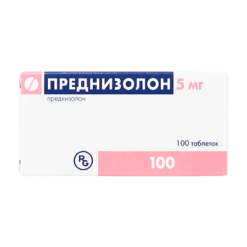No products in the cart.
Ozurdex, 0.7 mg
€1.00
Out of stock
(E-mail when Stock is available)
Description
Ozurdex is a GCS. Suppresses the functions of leukocytes and tissue macrophages. It restricts the migration of leukocytes to the area of inflammation. Disrupts the ability of macrophages to phagocytosis, as well as the formation of interleukin-1. Promotes stabilization of lysosomal membranes, thus reducing the concentration of proteolytic enzymes in the area of inflammation. Reduces capillary permeability, caused by the release of histamine. It suppresses fibroblast activity and collagen formation.
Inhibits the activity of phospholipase A2, which leads to suppression of the synthesis of prostaglandins and leukotrienes. Suppresses the release of COX (mainly COX-2), which also helps to reduce the production of prostaglandins.
Decreases the number of circulating lymphocytes (T- and B-cells), monocytes, eosinophils and basophils due to their movement from the vascular bed to the lymphoid tissue; inhibits formation of antibodies.
Dexamethasone suppresses pituitary release of ACTH and β-lipotropin, but does not reduce circulating β-endorphin. It suppresses the secretion of TSH and FSH.
It has a vasoconstrictor effect when directly applied to the blood vessels.
Dexamethasone has a pronounced dose-dependent effect on the metabolism of carbohydrates, proteins and fats. It stimulates gluconeogenesis, promotes amino acid uptake by liver and kidneys, increases activity of gluconeogenesis enzymes. In the liver, dexamethasone increases glycogen deposition by stimulating glycogen synthetase activity and glucose synthesis from protein metabolism products. Increased blood glucose activates insulin release.
Dexamethasone suppresses glucose uptake by fat cells, which leads to activation of lipolysis. However, due to increased insulin secretion, lipogenesis is stimulated, which leads to fat accumulation.
It has a catabolic effect in the lymphoid and connective tissue, muscles, adipose tissue, skin, bone tissue. Osteoporosis and Itzenko-Cushing’s syndrome are the main factors limiting long-term GCS therapy. As a result of catabolic action, growth suppression in children is possible.
In high doses, dexamethasone may increase brain tissue excitability and contribute to lowering the seizure threshold. It stimulates excessive production of hydrochloric acid and pepsin in the stomach, which contributes to the development of peptic ulcer.
In systemic use, the therapeutic activity of dexamethasone is due to anti-inflammatory, anti-allergic, immunosuppressive and antiproliferative effects.
In external and topical use, the therapeutic activity of dexamethasone is due to anti-inflammatory, anti-allergic and anti-exudative (due to the vasoconstrictor effect).
In terms of anti-inflammatory activity, it exceeds hydrocortisone by 30 times and has no mineralocorticoid activity.
Indications
Indications
Non- and allergic conjunctivitis, keratitis, keratoconjunctivitis without epithelial damage, iritis, iridocyclitis, blepharoconjunctivitis, blepharitis, episcleritis, scleritis, inflammatory process after eye injuries and surgical interventions, sympathetic ophthalmia.
Active ingredient
Active ingredient
Composition
Composition
1 implant contains:
Active substance:
dexamethasone 0.7 mg.
How to take, the dosage
How to take, the dosage
Injections: IV, IM or intra-articular. Within a day, 4-20 mg can be injected 3-4 times. Treatment duration is 3-4 days, then switch to oral supportive therapy.
Interaction
Interaction
Concomitant use with antipsychotics, bucarban, azathioprine leads to a risk of cataracts; with agents with anticholinergic effect – risk of glaucoma.
Concomitant use with dexamethasone decreases the effectiveness of insulin and oral hypoglycemic agents.
Concomitant use with hormonal contraceptives, androgens, estrogens, anabolic steroids may cause hirsutism and acne.
When concomitant use with diuretics increased potassium excretion is possible; with NSAIDs (including acetylsalicylic acid) – the incidence of erosive-ulcerative lesions and gastrointestinal bleeding increased.
In concomitant use with oral anticoagulants the anticoagulant effect may be weakened.
Concomitant use with cardiac glycosides may impair the tolerability of cardiac glycosides due to potassium deficiency.
Concomitant use with aminoglutethimide may decrease or inhibit the effects of dexamethasone; with carbamazepine may decrease the effects of dexamethasone; with ephedrine may increase dexamethasone excretion; with imatinib may decrease imatinib plasma concentration due to induction of its metabolism and increased excretion from the body.
Concomitant use with itraconazole increases the effects of dexamethasone; with methotrexate – possible increase in hepatotoxicity; with praziquantel – possible decrease in blood concentration of praziquantel.
In concomitant use with rifampicin, phenytoin, barbiturates the effects of dexamethasone may be weakened due to increased excretion.
Contraindications
Contraindications
Bacterial, viral, fungal eye diseases, tuberculosis eye damage, violation of the integrity of the ocular epithelium, an acute form of purulent eye infection in the absence of specific therapy, corneal diseases combined with epithelial defects, trachoma, glaucoma.
Side effects
Side effects
Rarely – itching, hyperemia, burning, dryness, folliculitis, acne, hypopigmentation, perioral dermatitis, allergic dermatitis, skin maceration, secondary infection, skin atrophy, stretch marks, sweat.
Long-term use or application to large areas of skin may cause systemic side effects common with GKS.
Similarities
Similarities
Additional information
| Shelf life | 3 years |
|---|---|
| Conditions of storage | At a temperature not exceeding 25 °C |
| Manufacturer | USA |
| Medication form | implant |
Related products
Buy Ozurdex, 0.7 mg with delivery to USA, UK, Europe and over 120 other countries.















